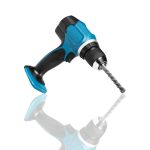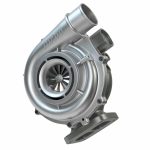Winter presents unique challenges for car ownership in the UK. Ensuring your vehicle remains in optimal condition during this season requires careful planning and practical storage techniques. Drivers face risks from harsh weather and potential damage to their automobiles. This guide offers essential tips to protect your car from the elements, enhance longevity, and ultimately save you potential repair costs. Equip yourself with knowledge to effectively shield your vehicle and enjoy peace of mind all winter long.
Preparing Your Car for Winter Storage
Proper car winterization ensures your vehicle remains in excellent condition during extended periods of inactivity. Begin with a thorough cleaning and detailing. This step prevents dirt and grime from causing damage over time and helps maintain your car's appearance. Pay special attention to removing any road salt, as it can lead to corrosion.
Also read : What is the recommended method for cleaning and preserving the soft top of a British roadster?
Next, check all fluid levels. Ensuring adequate oil, coolant, and brake fluid levels is crucial. These fluids play a vital role in maintaining the engine's health and preventing freezing in low temperatures. If necessary, replace old fluids with fresh ones to avoid any potential issues when you take your car out of storage.
Inspecting your tires is another key component of vehicle preparation. Proper inflation is essential to prevent flat spots and maintain tire integrity. Use a reliable pressure gauge to check each tire and inflate them to the manufacturer's recommended level. Consider using tire jacks to lift the car slightly off the ground, reducing pressure on the tires and suspension.
Additional reading : What are the precise steps to retrofit a turbocharger in a UK-made family hatchback?
By following these steps, you can ensure your car remains in optimal condition throughout the winter months, ready to hit the road when the warmer weather returns.
Optimal Storage Conditions for Winter
When considering car storage conditions for winter, maintaining the right environment is crucial. Temperature control is a key factor. Ideally, the storage area should be kept between 10°C to 21°C (50°F to 70°F). This range helps prevent fluid thickening and battery drain. Humidity levels also matter; aim for 50% to 60% to avoid rust and mould growth.
Indoor vs. Outdoor Storage
Choosing between indoor and outdoor storage depends on your circumstances. Indoor storage provides better protection against weather extremes and maintains optimal temperature and humidity levels. However, outdoor storage can be a viable option if a cover is used. Ensure the cover is breathable to prevent moisture accumulation.
Importance of Ventilation
Proper ventilation in the storage space is essential. It prevents the build-up of fumes and moisture, which can lead to corrosion and odour issues. If using a garage, ensure vents are unobstructed. For outdoor storage, position the car in a well-ventilated area. This practice helps maintain the car's condition and ensures it's ready for use when winter ends.
Maintenance Checks Before Storage
Before storing your vehicle for the winter, conducting thorough vehicle maintenance is essential. A comprehensive checklist ensures all components are in optimal condition. Begin with a detailed pre-storage inspection, focusing on critical areas like the battery, filters, and other vital systems.
Battery Maintenance
The battery is a crucial component often overlooked. Ensure it is fully charged to prevent any power loss during storage. Consider using a battery maintainer to keep the charge steady without overcharging. This device is particularly useful for long-term storage, as it helps extend the battery's lifespan and ensures your vehicle starts effortlessly when winter ends.
Filters Inspection
Next, check and change essential filters. The air filter ensures the engine receives clean air, crucial for performance. A clogged filter can reduce efficiency and lead to engine issues. Similarly, inspect the fuel filter to prevent contaminants from entering the fuel system. Don't forget the cabin filter, which affects air quality inside the vehicle. Replacing these filters before storage can prevent potential problems and maintain your car's health.
By addressing these maintenance checks, you ensure your vehicle remains in top condition throughout the winter months, ready for use when needed.
Using Car Covers and Protectants
Protecting your car during winter storage is crucial, and car covers play a vital role in this process. Selecting the right cover can shield your vehicle from dust, debris, and moisture, preserving its condition. There are various types of car covers, each offering unique benefits.
Types of Car Covers and Their Benefits
- Indoor Covers: Ideal for garage storage, these covers are typically lightweight and prevent dust accumulation.
- Outdoor Covers: Designed to withstand weather elements, they offer robust protection against rain, snow, and UV rays.
- Custom-Fit Covers: Tailored to your vehicle's dimensions, they provide superior coverage and prevent scratches.
Using Wax or Sealants for Added Protection
Applying a layer of wax or sealant before covering your car adds an extra barrier against moisture and contaminants. This step enhances the paint's durability and shine, ensuring your vehicle looks pristine when uncovered.
Tips for Choosing the Right Cover for Your Vehicle
Consider your storage environment and the level of protection needed. For outdoor storage, opt for a breathable, waterproof cover to prevent moisture build-up. Ensure the cover fits snugly to avoid wind damage. By choosing the appropriate car cover, you ensure comprehensive vehicle protection during winter storage.
Protecting the Interior of Your Car
Ensuring interior car protection during winter storage is essential for maintaining your vehicle's value and comfort. Start by thoroughly cleaning and protecting the upholstery. Dirt and stains can become more difficult to remove after prolonged storage, so use suitable cleaners and conditioners to preserve the fabric or leather.
Using Moisture Absorbers
Preventing mould and mildew is crucial in winter care. Consider using moisture absorbers inside your car to maintain a dry environment. These products help remove excess humidity, protecting your car's interior from potential damage. Place them strategically, such as under seats and in the boot, to ensure comprehensive coverage.
Storing Personal Items and Valuables
Before storage, remove all personal items and valuables from your vehicle. This precaution not only prevents theft but also reduces the risk of damage from shifting items during storage. If certain items must remain in the car, secure them in compartments or use organisers to prevent movement. This step is a simple yet effective part of interior car protection, ensuring your vehicle remains in top condition throughout the winter months.
Checking and Preparing Your Battery
Ensuring proper battery maintenance is a critical aspect of effective winter car care. Before storing your vehicle, be vigilant for signs of battery issues. Common indicators include difficulty starting the engine, dim headlights, or a battery warning light on the dashboard. Addressing these signs early can prevent more significant problems during storage.
Best Practices for Disconnecting the Battery
If you plan to store your car for an extended period, disconnecting the battery is advisable. This step helps prevent power drainage and extends the battery's life. Begin by turning off the ignition and removing the negative terminal first, followed by the positive. Store the disconnected battery in a cool, dry place to avoid any damage.
Recommended Battery Maintainers and Chargers
Using a battery maintainer is highly recommended during winter storage. These devices keep the battery charged without overcharging, ensuring it remains in optimal condition. Look for maintainers with automatic shut-off features to prevent overcharging. Additionally, consider investing in a quality battery charger for regular maintenance, which can be particularly useful if your battery shows signs of weakening. By following these practices, you can ensure your vehicle's battery remains reliable and ready for use when winter ends.
Fuel System Maintenance
Proper fuel preservation is crucial when preparing your vehicle for winter storage. Begin by filling the tank to prevent moisture build-up, which can lead to rust and corrosion within the fuel system. A full tank also minimises the air space where condensation can occur, protecting your car's internal components.
Benefits of Fuel Stabilizers
Using a fuel stabilizer is a smart move for long-term storage. These additives prevent the fuel from degrading, which can cause gum and varnish build-up in the engine. To use a stabilizer, add it to your fuel tank before filling up. This ensures even distribution and maintains fuel quality throughout the storage period.
Checking for Leaks and Fuel Line Integrity
Before storing your car, inspect the fuel system for leaks. Check hoses, seals, and connections for signs of wear or damage. Clear fuel lines are essential for preventing blockages and ensuring smooth operation when you start your vehicle after storage. Addressing these issues early can help avoid costly repairs and ensure your car is ready to go when winter ends.
By following these car storage tips, you can maintain your vehicle's fuel system, ensuring optimal performance and longevity.
Additional Tips for Winter Vehicle Care
Ensuring vehicle longevity during winter storage involves more than just initial preparation. Regular checks throughout the storage period can prevent unexpected issues. Inspect your car monthly, focusing on tyre pressure, fluid levels, and battery condition. This vigilance helps maintain your vehicle's health and ensures it's ready for use when needed.
Preparing for Potential Winter-Related Emergencies
Even with the best winter car tips, emergencies can occur. Equip your vehicle with an emergency kit, including essentials like a flashlight, blanket, and first-aid supplies. These items are invaluable in unforeseen situations, providing peace of mind during winter months.
Long-Term Storage Considerations for Classic or Vintage Cars
Classic cars require special attention for long-term storage. Protecting their unique components is crucial. Ensure the use of high-quality car covers to shield them from dust and moisture. Regularly start the engine to keep it in good condition and prevent mechanical issues. For these cherished vehicles, maintaining a stable environment is key to preserving their value and functionality.
By incorporating these additional tips, you can effectively safeguard your vehicle, ensuring its longevity and readiness for the road when winter ends.
Resources and Recommended Products
When preparing your car for winter storage, having the right car storage products is essential. Selecting a high-quality car cover is crucial. Indoor covers are great for dust protection, while outdoor covers should be durable and waterproof, offering protection against harsh weather. Opt for custom-fit covers to ensure a snug fit, preventing scratches and damage.
For battery maintenance, consider investing in reliable battery maintainers and chargers. These devices keep your battery charged without the risk of overcharging. Look for options with automatic shut-off features for added safety. Brands like Battery Tender and NOCO Genius are well-regarded for their efficiency and reliability.
In addition to covers and battery care, having the right winter maintenance tools can make a significant difference. An essential tool is a reliable tyre pressure gauge to monitor and maintain optimal tyre pressure. A portable jump starter can be a lifesaver in emergencies, ensuring you’re never stranded with a dead battery. Finally, consider moisture absorbers to keep your car's interior dry and free from mould during storage.
By equipping yourself with these recommended products, you can ensure your vehicle remains in excellent condition throughout the winter months.
















